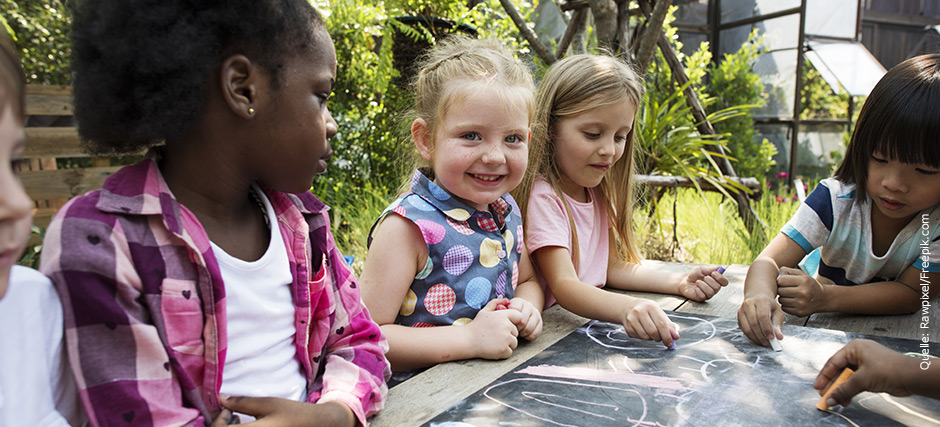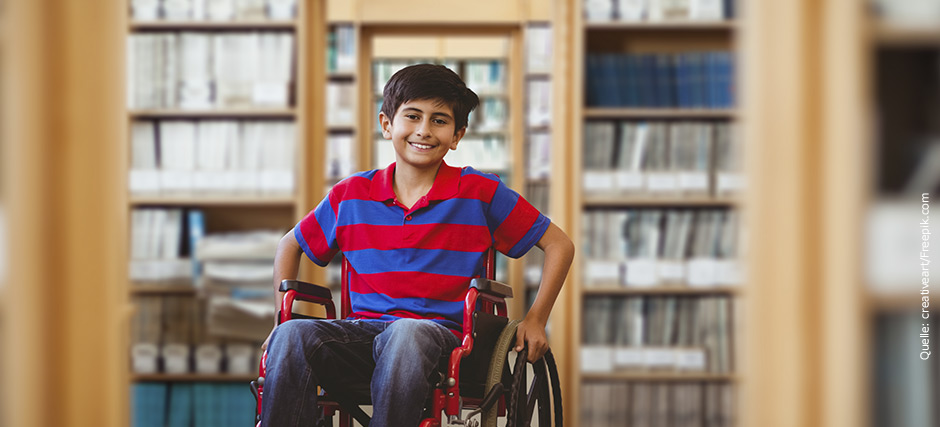Kinderrechte und Klimawandel - Kommentierung des General Comment No. 26
Der UN-Ausschuss für die Rechte des Kindes hatte bis zum 15. Februar 2023 Verbände und Organisationen, interessierte Erwachsene sowie Kinder und Jugendliche dazu eingeladen, den ersten Entwurf der Allgemeinen Bemerkungen Nr. 26 mit dem Schwerpunkt auf den Klimawandel zu kommentieren. Gemeinsam mit der National Coalition Deutschland – Netzwerk zur Umsetzung der UN-Kinderrechtskonvention haben wir diese Gelegenheit genutzt und unsere Kommentierung nach Genf geschickt. Darin begrüßen wir ausdrücklich, dass der UN-Ausschuss noch in diesem Jahr einen General Comment und damit eine Interpretationshilfe zur UN-Kinderrechtskonvention herausgibt und damit in besondere Weise den Aktivismus von Kindern und Jugendlichen im Klimaschutz würdigt. Das weitere Feedback zum Entwurf finden Sie nachfolgend.
Kommentierung des General Comment No. 26 als PDF
Feedback on the Draft general comment No. 26 on children’s rights and the environment with a special focus on climate change
The Child and Youth Welfare Association – AGJ and the National Coalition Germany, Network for the Implementation of the UN Convention on the Rights of the Child welcome the fact that the UN Committee will issue a General Comment on "Children's rights and the environment with a special focus on climate change" in 2023. We also expressly appreciate that the Committee is paying particular tribute to the activism of children and young people in environmental protection.
Below you will find additions and remarks to the draft General Comment No. 26, which we politely ask you to take into consideration in your review:
- Instead of using the term climate change, the term climate crisis should be used throughout GC26, especially in the title. The term climate crisis more accurately describes the ecological, political and social crisis in connection with human-made global warming. The term climate change, on the other hand, describes changes in the climate that can be human-made but also of natural origin.
- The introduction refers to climate justice movements as inspiration. Initiatives by young people, such as Fridays for Future, should be explicitly named here and the role of girls (also from the global South) as climate activists should be highlighted. (Number 2 or Number 4)
- Reference to the Agenda 2030: The 17 global goals for sustainable development of the Agenda 2030, the Sustainable Development Goals (SDGs), are addressed to everyone: governments worldwide, but also civil society, the private sector and academia, and should be implemented more ambitiously by governments. (e.g. add in Number 10 at the end)
- Education for sustainable development should also be mentioned as a goal and a reference to the Agenda 2030 should be made, as well as transparency with regard to the environmental impact of consumer goods and services should be addressed. (Number 11) Environmental education and education for sustainable development should be strengthened. The Agenda 2030 applies to all UN member states and formulates the 17 Sustainable Development Goals (Global Goals). Article 29 of the UNCRC includes education for sustainable development in the sense of the Agenda 2030. States must take appropriate measures to make the Agenda 2030 known and to anchor Education for Sustainable Development in the school curriculum as well as in other education curricula (e.g. child day care), training and further education of teaching staff, specialists and in the activities of cities and municipalities, and to support peer-to-peer learning and training among young people themselves. (Number 11)
- Compliance with the agreements of the Paris Climate Agreement should be formulated as a further goal. (Number 11)
- In addition, the targets should emphasise a commitment by States to apply a child rights-based approach to climate change policies and actions (including climate finance) and clarify what this approach entails. (Number 11)
- The objective of the General Comment, namely to promote a holistic understanding of children's rights related to the environment and to clarify the obligations of State Parties and provide meaningful guidance on legislative, administrative and other appropriate measures to be taken in consideration of environmental issues, with a particular focus on climate change, is supported. (Number 11 b and c). This should provide a sharpened understanding of States' obligations. States have a high obligation to respect protection rights vis-à-vis children, also in view of their international obligations. It should be emphasised that the best interest of the child should be a primary consideration while implementing these measures.
- The phrases "developing" and "developed country" as well as "development assistance" should be changed. This colonial and long outdated language obscure the fact that the response to the climate crisis must happen in cooperation on an equal footing, where everyone learns from each other and rich countries do not give “gifts” to others. (Number 12, 111b, 120).
- Replace the term “take into account” by the word “prioritise" in the following sentence: “Discussions about future generations should prioritise the rights of children already living on this planet and those who are constantly joining them.” (Number 13)
- Change of the wording “eliminating childhood exposure to pollution”: Here, the explicit goal should not be to keep children away from pollution, but to reduce pollution in the first place. It is implied here that the (polluted) environment is a danger and threat to children. The text should state more clearly that people and industry are polluting the environment and consequently endangering children, thus counteracting the right to, for example, protection from economic exploitation and from performing any work that is likely (...) to be harmful to the child's health, the right to free play and the highest attainable standard of health (Number 15).
- Add to the following sentence: “States should develop policies, action plans and other measures to achieve goals that prevent environmental harm, such as eliminating childhood exposure to pollution and toxic substances and rapidly reducing greenhouse gas emissions as well as achieving climate neutrality”. Add: “The implementation of these measures and action plans should be continuously evaluated by the states.” (Number 15)
- Throughout GC26, it should be emphasised more strongly that the climate crisis marginalises already disadvantaged groups even more. (Add in number 17 and paragraph 50). Add: “The climate crisis further marginalises already intersectionally disadvantaged groups.”
- "Environmental actions can jeopardise children's full and holistic development": "Environmental action" is a misleading term here since it can also refer to environmental activism.“Environmental destruction” would be a more appropriate term (Number 19).
- In order to truly contribute, children not only need information, they must also be enabled to speak and be heard. According to UNCRC, Art. 12 Children have the right to speak and to be heard, therefore asking for being allowed seems not adequate. Add: "They should have access to adequate environmental information and education provided onsite and via digital means (Ref. GC #25, Art. 99-105) focused on respect for the natural environment, sustainable lifestyles and leading a responsible life in a free society, and they must be consulted and involved by governments when measures are taken that affect young people. Furthermore, by implementing ESD measures in their environment (kindergarten, school, neighbourhood or community), children should learn competences that enable them to make a real contribution". (Number 22). Add a reference to GC 25, Art. 16 and 50.
- Here and in other places, "household air pollution" is mentioned as a threat. We suggest that air pollution from traffic and industry must also always be mentioned as a threat and major factor in violating children’s right to the highest attainable standard of health when referring to air pollution. The following sentences may be changed accordingly: "Environmental pollution from transport and industry is a major threat to children’s health, as explicitly recognized in article 24 (2) (c) of the Convention. However, in many countries, pollution and especially air pollution from CO2 emissions is overlooked and its impact is underestimated. Unsafe, unclean drinking water, polluted food from contaminated watercourses and rivers, inadequate sanitation and household air pollution as well as outdoor air pollution pose serious threats to children’s health. Pollution associated with industrialization, including exposure to toxic substances and hazardous waste, present more complex and uncertain threats to health, often resulting in effects long after exposure”. (Number 24)
- The Covid-19 pandemic should be mentioned in GC 26. Where diseases through "loss of biodiversity and ecosystems" are mentioned, a substantive reference to Covid-19 should be made. The connection between the climate crisis and the corona crisis (as only one example of zoonotic pandemics) should be drawn in the GC. (Number 25)
- Promoting and addressing the issue of the increasing prevalence of eco-anxiety in the education/further training of therapists and other professionals in this field (Number 27).
- In addition to data routinely generated by health information systems, research is needed, for example, for longitudinal cohort studies and studies of pregnant women, infants, and children exposed to environmental harm during critical time windows and at sensitive health endpoints. Add: (Gender-aggregated) quality data must also take into account regional differences and include vulnerable groups that are particularly affected by the climate crisis. (Number 30)
- Instructional and educational materials (such as games, children's literature, etc.) should include accurate, updated environmental information appropriate to age and developmental level. (Number 31). Here, special consideration should again be given to education for sustainable development.
- Include “toxic free building materials, including playgrounds” (Number 36)
- The term "climate-related migration" is only mentioned scarcely in the draft. This is insufficient and does not do justice to the severe consequences on children’s rights. The term "climate refugees" should be explained in more detail, and the effects on vulnerable groups must also be mentioned in this context. It is not only acute disasters that lead to migration. It is even predicted today that the permanent collapse of habitats due to the climate crisis will become the most important trigger of global migration movements. The climate crisis changes habitats in a relatively short period of time and thus triggers migration movements - climate refugees will not only come from islands that are no longer habitable, but also from areas where agriculture as a livelihood no longer reliably ensures survival or access to drinking water vanishes. This particularly affects vulnerable groups such as girls, who are last in line when resources are scarce or who are particularly affected by certain circumstances (e.g. pregnancies in particularly high temperatures tend to be high-risk pregnancies). The rights of vulnerable groups must also be protected in the resulting migration movements. (Number 44 and 106).
- The intersectional affectedness in the context of the climate crisis and gender-specific impacts must be formulated more clearly. We recommend that the General Comment should address how the rights named in the Convention can be concretely affected by the climate crisis. The long-term impacts, such as reduced opportunities and capacities for schooling, especially for girls, must also be addressed. Girls and women bear the brunt of environmental, economic and social impacts. Often, girls are the last to eat or the last to be rescued. However, they are the first to be withdrawn from school and face greater health and safety risks when water and sanitation systems are compromised. They take on more domestic and care work as resources disappear. Many rights gained for girls, such as declines in early marriage or FGM (Female Genital Mutilation) are being jeopardised again due to the climate crisis. (Number 50)
- Simply listing marginalized groups does not seem sufficient for explaining how the climate crisis violates children’s right to non-discrimination. In addition to the remarks above on gender-specific impacts, other intersectional impacts should be explained here. (Number 50)
- Children in the Global South suffer more from the climate crisis, this should be noted in GC No. 26, for example but not exclusively in paragraph G “Non-Discrimination” (after number 51). Although mainly countries of the Global North contribute to the climate crisis and continue to fuel it, the populations of the Global South suffer disproportionately more from the impacts of the climate crisis ( (MAPA). This violates their right to non-discrimination and requires the recognition and restitution of so-called climate debt.
- We suggest to add that meaningful child participation is required also in international political meetings (e.g. COP, WEF, G7) and to specify how the opinions of children and young people are to be included in political decision-making processes, which could for example be eased by use of digital means (ref. to GC#25, Art. 16 - 18), since the voting age in many countries is 18+ (Number 56).
- Add that the right to a clean, healthy and sustainable environment is also directly linked to Art. 3, UNCRC (Number 71)
- We welcome the concrete actions outlined in figure 73. However, we miss the explicit naming of states as responsible stakeholders for these actions. We suggest to add: “Towards the realization of this right for children, the Committee considers that states should take the following actions immediately: … (Number 73)
- In addition, we propose the following new sub-paragraphs in Number 73:
- () Clean-up and restoration of contaminated rivers.
- () Flood protection
- () Measures against desertification/desiccation
- () Earthquake protection
- () Protection measures against nuclear irradiation
- () Reduce use of (single-use) plastic and hold industry accountable for plastic waste and pollution.
- Again, in figure 73 (a) air pollution by transport and industry should be mentioned as well as clear state responsibilities: “Improve air quality by reducing both outdoor and household air pollution to prevent under-five mortality. This can be achieved by promoting car-free cities and affordable public transport and holding industry accountable for CO2-Emission as well as supporting families in the Global South to build cooking places outside the home. (Number 73 a)
- The wording “passively inheriting a clean, healthy and sustainable environment” seems misleading considering that children are inheriting a destroyed uninhabitable planet if no climate action is taken now. (Number 74)
- In the state reporting procedure, the climate protection measures of all states that have ratified the UN Convention on the Rights of the Child should be made a permanent reporting item in the UN dialogue, e.g. via a permanent question in the list of issues and queried as part of the Universal Periodic Review (e.g. paragraph B). We may also recommend further accountability options beyond state reporting procedures, e.g. recommending a regular progress report (Number 81).
- Describe in more detail how access to information can be ensured, e.g. in crisis and conflict contexts or rural regions or without stable internet access or the corresponding technical equipment. (Number 85) (Add a reference to GC #25, Art. 9 - 11, and Art. 50 - 57.)
- We suggest including a recommendation to member states for a supply chain law that also explicitly protects children's rights and environmental standards (Number 90). The business sector therefore should play a key role in addressing environmental harm that interferes with the enjoyment of children's rights and promoting green business.
- Reference should be made to existing regulations such as the UN Guiding Principles on Business and Human Rights. (Number 114) It is not only about incentives, but also about the fact that an obligation to compensate damages is an important part of legal protection. Add as last sentence: “An assessment of damages is not enough. There needs to be a clear obligation that damages incurred are compensated.” (Number 115)
- The "best interest of the child" principle is missing in figure 118. We suggest to add that states should oblige investors to take the interests of children into account in accordance with the UNCRC. If states do not hold companies accountable, they must bear the costs themselves. (Number 118)
- In the context of figure 120, the concept of ‘Climate Debts"’ should be mentioned (again) in the following form: “States of the Global North (especially former colonial powers) owe States of the Global South climate debts for their disproportionately large contributions to climate change and resulting damage for most affected people and areas (MAPA). The principle of common but differentiated responsibilities indicates that States of the Global North should cooperate with States of the Global South and provide the necessary climate finance for climate action that upholds child rights. This is in line with the international climate commitments that States of the Global North have undertaken. In particular, despite the link between various financing mechanisms including on sustainable development, climate finance provided by States of the Global North should be new and additional to other financial flows that support children’s rights. It should also be transparent and avoid tracking challenges such as double counting.” (Number 120)
- We welcome the clear and precise wording of Chapter VI on the climate crisis and suggest moving it to the beginning of the GC to underline its relevance.








